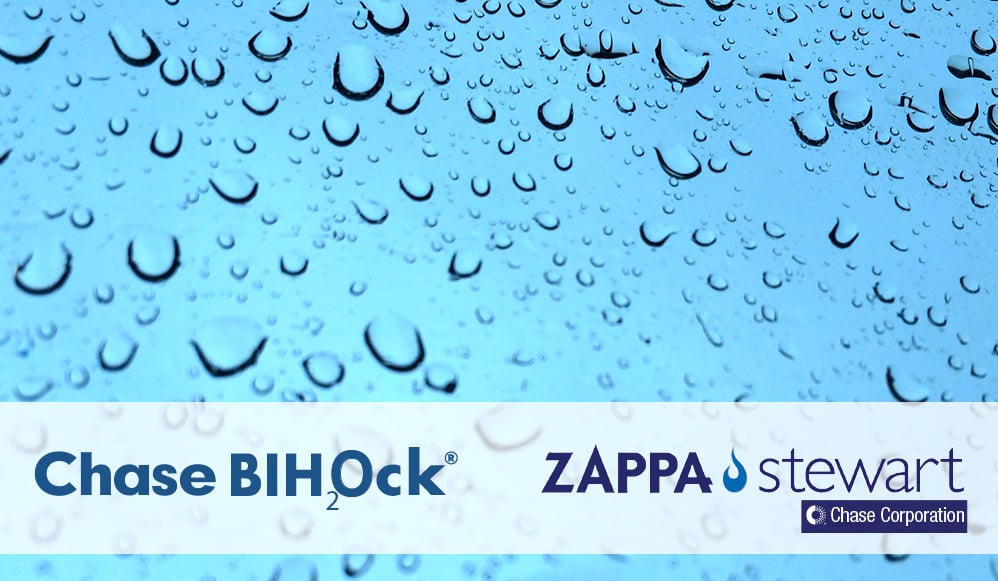Underground cables are used in various applications where the need for reliable and uninterrupted...
Stop Water Penetration with Water-blocking Materials While Meeting Industry Requirements
 A question our sales team frequently encounters is, what type of products/polymers should I use to prevent water penetration in my outside plant cables that must meet the requirements of the various industry specifications? We understand it can be a challenge to determine the best fit. At Chase/Zappa-Stewart, we provide multiple options to meet your cable needs as they pertain to blocking moisture in your cable designs. This blog post is intended to provide an overview of some of the most common material characteristics, applications, and, most importantly, benefits to help you choose the correct Chase/Zappa-Stewart, product line of water-blocking materials.
A question our sales team frequently encounters is, what type of products/polymers should I use to prevent water penetration in my outside plant cables that must meet the requirements of the various industry specifications? We understand it can be a challenge to determine the best fit. At Chase/Zappa-Stewart, we provide multiple options to meet your cable needs as they pertain to blocking moisture in your cable designs. This blog post is intended to provide an overview of some of the most common material characteristics, applications, and, most importantly, benefits to help you choose the correct Chase/Zappa-Stewart, product line of water-blocking materials.
PRODUCT OFFERINGS AND DESCRIPTIONS
GR-111
Very small particle size superabsorbent powder (0 – 63µ); typically used inside the optical fiber buffer tube; also used in proprietary yarn coating applications
88 HS
Medium particle size superabsorbent powder (45 – 150µ); typically used to block the interstices around stranded loose tuber fiber cables or in the concentric neutral areas of medium and high voltage power cables
Flexible semi-conductive thermoplastic/semi-conductive mastic used for moisture protection in the conductor strand of medium voltage underground and submarine cables
40-301
Superabsorbent powder designed for applications with high ionic content, such as for submarine cables that must operate in seawater conditions
HM002
Proprietary water-soluble hot melt adhesive containing a very small particle size range of superabsorbent powder; can be used for direct application in the cable to seal the overlap of the armor, for instance, or can be applied to a yarn or other substrate to add the water blocking functionality to that product
PERFORMANCE BENEFITS
Blocks water penetration in the cable to
- prevent premature cable failure,
- increase cable life cycle, and
- reduce maintenance costs
ANCILLARY BENEFITS
- cable manufacturing
- reduces cable manufacturing costs; improves processing speeds
- improves housekeeping in factories (gels vs. dry materials)
- reduces capital equipment needs
- prevents unwanted material flow
- reduces cable prep time for in-process and post-process testing
- eliminates the need for use of solvents
- cable product
- reduced cable weight
- reduced cable diameter
- improved sheath bonding
- improved CSM coupling in fiber cables
- eliminates oxidation concerns
- environmentally friendly
- end-user
- reduced field installation and repair times, so significantly reduced costs
- increased cable lengths per spool
- increased pull lengths through conduits
- increased duct capacity due to reduced cable diameter
- extended cable life cycle
- decreased recycling costs
Chase provides innovative raw materials designed and manufactured to reduce cable costs and improve cable performance for manufacturers and end-users.Chase/Zappa-Stewart's Dry WB materials make it possible for cable manufacturers to meet the demanding regulatory requirements related to outside plant cable systems.
Here at Chase we are eager to assist you in choosing the right product line for your specific project. Our sales team has worked with wire and cable manufacturers for decades. We understand the various standards bodies’ test requirements. From standard applications to extremely specialized constructions tailored for individual customer demands, Chase/Zappa-Stewart is your water-blocking materials resource. Reach out to us anytime to learn more about our unmatched options.
Don’t leave it to chance; leave it to Chase!






